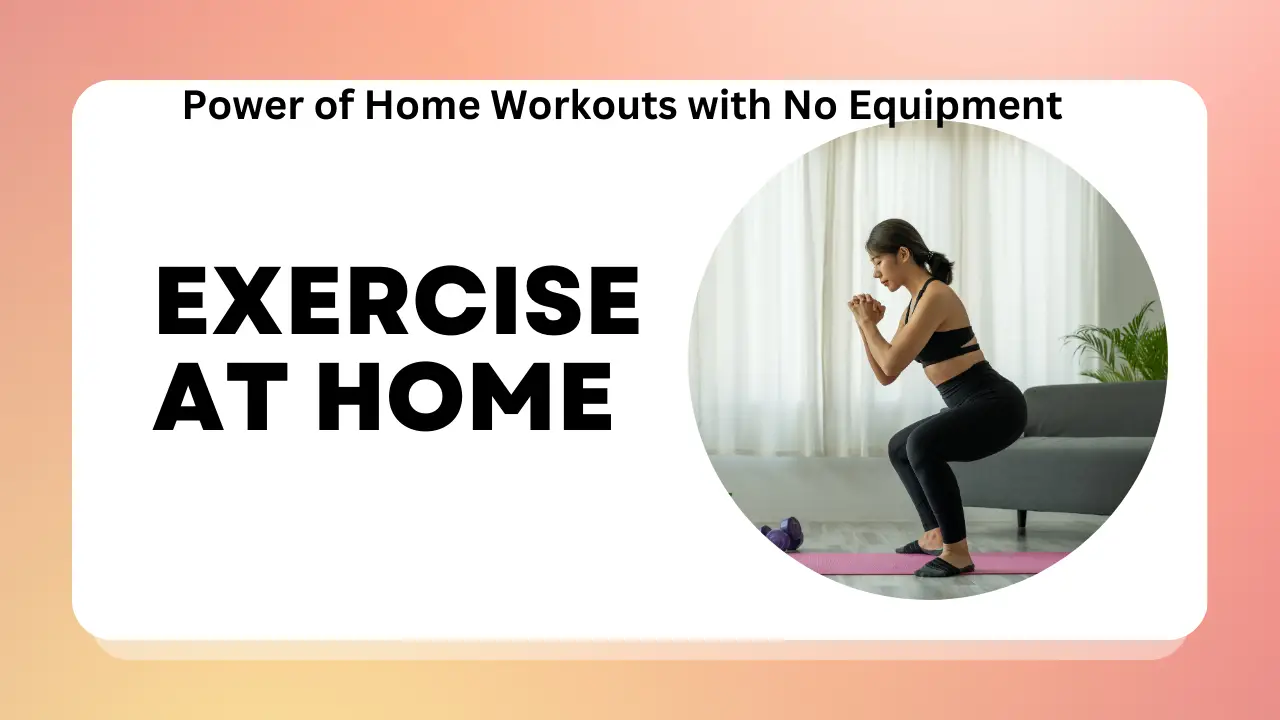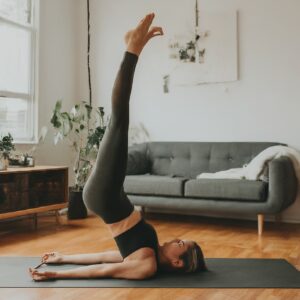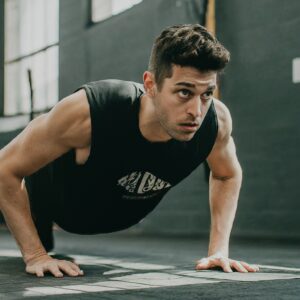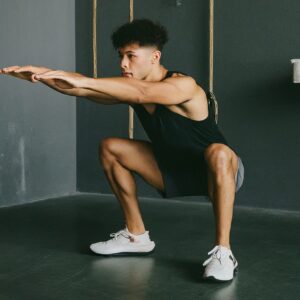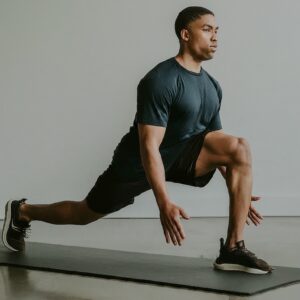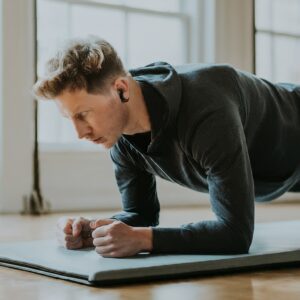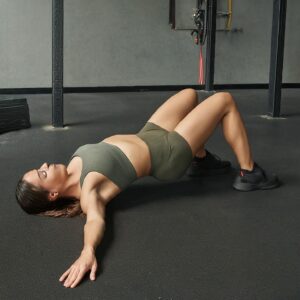Home Workout Routines for a Sculpted Physique, No gym membership? No problem! Unleash your fitness potential with effective home workout routines designed for all levels. This comprehensive guide equips you with everything you need to sculpt your dream physique, from bodyweight exercises and beginner routines to HIIT workouts and advanced progressions. Discover how to target every muscle group, prioritize flexibility and mobility, fuel your body for optimal results, and stay motivated throughout your journey. Start your transformation today and witness the empowering freedom of home workouts!
Ditch the Gym and embrace Convenience: Unleash the Power of Home Workouts with No Equipment
Hitting the gym can be a hassle, requiring travel, time commitment, and often, membership fees. But fear not, fitness enthusiasts and beginners alike! Home workouts with no equipment offer an accessible and convenient alternative, unlocking your fitness potential right within your own four walls.
Here are just a few of the benefits that make home workouts with no equipment the ultimate win-win:
1. Convenience at Your Fingertips:
Imagine rolling out your yoga mat in your living room or cranking out squats in your kitchen – no more rushing to the gym, waiting for equipment, or battling traffic. Home workouts offer the ultimate flexibility, allowing you to squeeze in a sweat session whenever your schedule allows, be it early in the morning, during your lunch break, or even late at night.
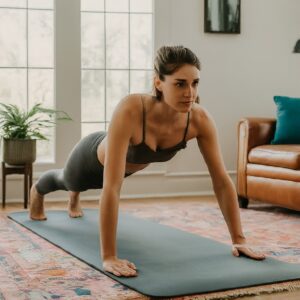
Gone are the days of hefty gym memberships and expensive equipment purchases. Bodyweight exercises require nothing but your own bodyweight, making them a cost-effective way to achieve your fitness goals. You can literally transform your body without spending a dime!
3. Versatility for All Levels:
Home workouts cater to everyone, from fitness newbies to seasoned athletes. By modifying exercises and adjusting intensity, you can create routines that match your current fitness level and goals. Whether you’re looking to build muscle, improve flexibility, or simply boost your energy levels, there’s a bodyweight workout waiting for you.
4. Adaptable to Your Space:
No fancy gym equipment or dedicated workout space is needed! With a little creativity, you can turn any corner of your home into a mini gym. Use chairs as benches, stairs for step-ups, and even walls for push-ups. The possibilities are endless, and your workout space is limited only by your imagination.
Turning Your Home into a Fitness Haven: Setting the Stage for Success
Now that you’re pumped about the benefits of home workouts, let’s dive into how to get started and build a routine that sticks. Here are some key steps to ensure your journey is smooth and successful:
1. Craft Your Fitness Sanctuary:
While a dedicated space isn’t crucial, creating a designated workout area can boost motivation and focus. Choose a well-lit, clutter-free corner with enough space for movement. Add a yoga mat, resistance bands (optional), and some upbeat music to set the mood. Remember, even a small area can be your personal fitness haven!
2. Dream Big, Start Small:
Setting ambitious goals is great, but starting realistically is key to avoiding burnout and ensuring long-term success. Begin with shorter workouts (20-30 minutes) and gradually increase duration and intensity as you build fitness. Start with 2-3 workouts per week and gradually progress as you adapt. Remember, consistency is vital, so prioritize regular sessions over intense bursts.
3. Consistency is King, Motivation is Queen:
The beauty of home workouts is their flexibility. Find a time that works for you and stick to it as much as possible. Schedule your workouts in advance and treat them like important appointments. Partner up with a friend for online workouts or join a virtual fitness community for accountability and motivation. Remember, even small steps add up, so celebrate your progress and reward yourself for reaching milestones.
Here are some additional tips to keep you motivated:
- Track your progress: Use a fitness app or journal to monitor your workouts and celebrate improvements.
- Mix it up: Try different bodyweight exercises, routines, and workout styles to keep things interesting.
- Find a workout buddy: Exercising with a friend or family member can add fun and accountability.
- Connect with the online fitness community: Join online groups or forums for inspiration and support.
- Reward yourself: Celebrate your achievements with healthy treats or non-food rewards.
Prepare Like a Pro: Mastering the Warm-Up for Peak Performance
Before diving into your home workout routine, remember the importance of a proper warm-up! This prepares your body for exercise, reduces the risk of injury, and improves overall performance. Here’s what you need to know:
1. Dynamic Stretching for Gentle Activation:
Ditch the static stretches! Dynamic stretches use active movements to gently increase your heart rate, loosen muscles, and improve joint mobility. Think arm circles, leg swings, lunges with torso twists, and high knees. Aim for 5-10 repetitions of each movement, focusing on smooth and controlled motions.
2. Joint Mobility Drills for Enhanced Range of Motion:
These drills target specific joints, improving their range of motion and flexibility. Examples include neck rolls, shoulder circles, wrist rotations, hip circles, and ankle rotations. Perform 5-10 repetitions for each joint, focusing on controlled movements and feeling a gentle stretch.
3. Cardiovascular Warm-Up to Get Your Blood Pumping:
Gradually elevate your heart rate and prepare your cardiovascular system for exercise. Options include jumping jacks, jumping rope (if space allows), burpees (modified if needed), high knees, or light jogging in place. Aim for 5-10 minutes of light cardio, gradually increasing intensity.
Remember: Don’t neglect your upper body! Include arm circles, shoulder shrugs, and chest openers in your warm-up to prepare your entire body for movement.
Unleash Your Inner Powerhouse: Bodyweight Exercises for a Sculpted Physique
Now that you’re warmed up and ready to move, let’s explore some fundamental bodyweight exercises that target various muscle groups and can be easily incorporated into your home workout routine:
1. Push-Ups: The Ultimate Upper Body Challenge
Push-ups are a classic for a reason! They work your chest, triceps, shoulders, and core, making them a powerhouse exercise for upper body strength. Start on your knees or incline your body on a wall or bench for modifications. Aim for 3 sets of 8-12 repetitions, focusing on proper form and maintaining a straight plank position throughout.
2. Squats: Building a Strong Lower Body Foundation
Squats are essential for building strong legs and glutes. Stand shoulder-width apart, toes slightly pointed outwards, and lower your body as if sitting back into a chair. Keep your core engaged, back straight, and heels flat on the ground. Aim for 3 sets of 10-15 repetitions, increasing difficulty with jump squats or single-leg squats as you progress.
3. Lunges: Sculpting Powerful Legs and Glutes
Lunges target your quads, hamstrings, glutes, and core with each step. Step forward with one leg, lowering your hips until both knees are bent at 90-degree angles. Keep your front knee aligned with your ankle and your back heel lifted. Push back to starting position and repeat with the other leg. Aim for 3 sets of 12-15 repetitions per leg.
4. Planks: The Core King
Planks are a fantastic core exercise that also engages your shoulders and back. Start in a push-up position with your forearms on the ground and your body forming a straight line from head to heels. Engage your core and hold for 30-60 seconds, gradually increasing the hold time as you get stronger. Aim for 3 sets of your hold time.
5. Glute Bridges: Shaping Your Posterior Chain
Glute bridges target your glutes, hamstrings, and core. Lie on your back with knees bent and feet flat on the floor. Lift your hips off the ground, squeezing your glutes at the top. Hold for a second before lowering back down. Aim for 3 sets of 15-20 repetitions.
6. Tricep Dips: Sculpting Strong Arms
Tricep dips are an excellent exercise for building strong triceps. Use a chair, bench, or even a step for support. Place your hands shoulder-width apart on the edge of the surface, with your fingers facing inwards. Lower your body until your elbows are bent at 90 degrees, then push back up to starting position. Aim for 3 sets of 8-12 repetitions, or modify by doing knee dips on the floor.
7. Leg Raises: Strengthening Your Core
Leg raises are a challenging core exercise that targets your lower abs. Lie on your back with legs extended and hands by your sides. Lift your legs straight up off the ground until they form a 90-degree angle with your torso. Lower slowly and with control. Aim for 3 sets of 10-15 repetitions, or modify by doing knee raises if needed.
Remember, these are just a few examples, and there are countless variations and progressions you can explore to keep your workouts challenging and engaging. Start with basic variations and gradually increase difficulty as you gain strength. Listen to your body, modify exercises as needed, and most importantly, have fun!
Cardio Powerhouse: Get Your Heart Pumping with Bodyweight Workouts
Now that you’ve mastered the fundamental bodyweight strength exercises, let’s turn up the intensity with some cardio and HIIT (High-Intensity Interval Training) options:
1. Classic Cardio Blasters:
These bodyweight exercises elevate your heart rate, burn calories, and improve cardiovascular fitness:
- Jumping Jacks: A timeless classic, engaging your entire body with jumping jacks for 30-60 seconds is a great way to get your heart pumping.
- High Knees: Run in place while bringing your knees as high as possible towards your chest for 30-60 seconds.
- Burpees: This full-body exercise combines a squat, push-up, and jump for an intense burst of cardio. Start with modified versions (squat thrusts) if needed. Aim for sets of 10-15 repetitions with short rest periods.
- Mountain Climbers: Assume a high plank position and alternate bringing your knees towards your chest, mimicking a climbing motion. Maintain a fast pace for 30-60 seconds.
- Jump Squats: Regular squats with an added jump at the top. Start with low impact versions like squat hops and progress to full jump squats as you get fitter. Aim for sets of 10-15 repetitions.
- Running in Place: Simulate running while staying in one spot. Focus on proper form with high knees and arm swing, maintaining a high intensity for 30-60 seconds.
2. HIIT it Hard:
For a quick and intense workout, try HIIT routines that alternate short bursts of high-intensity effort with brief rest periods:
- Tabata: Perform an exercise for 20 seconds at maximum intensity, followed by 10 seconds of rest. Repeat for 8 cycles (4 minutes total). Choose any challenging bodyweight exercise like jumping jacks, burpees, mountain climbers, or high knees.
- AMRAP (As Many Rounds As Possible): Set a timer for 10-15 minutes and perform as many rounds as possible of a circuit made up of 2-3 bodyweight exercises like squats, lunges, and push-ups. Rest briefly between rounds and push yourself to complete more rounds each time.
Remember, these are just examples, and you can create your own cardio and HIIT routines based on your fitness level and preferences. Start with shorter durations and lower intensity levels and gradually progress as you build endurance.
Bonus Tip: Combine bodyweight strength training exercises with your cardio routines for a well-rounded workout that targets different muscle groups and improves overall fitness.
Enhance Your Movement: Flexibility and Mobility Routines for a Supple Body
Now that you’ve explored strength training and cardio, let’s prioritize flexibility and mobility to improve your range of motion, reduce stiffness, and prevent injuries. Here are some effective methods to incorporate into your home workout routine:
1. Yoga Poses for Flowing Flexibility:
Yoga offers a wide range of poses that improve flexibility and mobility throughout your body. Consider these options:
- Downward-Facing Dog: This classic pose stretches your hamstrings, calves, shoulders, and spine. Hold for 5-10 breaths.
- Cobra Pose: This backbend opens your chest, shoulders, and core. Hold for 5-10 breaths.
- Child’s Pose: This restful pose stretches your hips, thighs, and ankles and provides relaxation. Hold for as long as you need.
- Warrior II Pose: This standing pose opens your hips, groins, and chest. Hold for 5-10 breaths on each side.
- Pigeon Pose: This hip opener targets your deep hip muscles. Hold for 5-10 breaths on each side.
2. Foam Rolling for Myofascial Release:
Foam rolling helps release muscle tension and improve tissue mobility. Use a foam roller to target your quads, hamstrings, calves, glutes, IT bands, and upper back. Apply gentle pressure and roll for 30-60 seconds per area.
3. Static Stretching for Deeper Releases:
After your workout or on separate days, dedicate time to static stretches that hold each position for 30-60 seconds. Focus on major muscle groups like hamstrings, quads, calves, glutes, chest, shoulders, and back. Remember to breathe deeply and relax into each stretch.
Sample Home Workout Routines for All Levels:
Now that you’ve equipped yourself with various exercises and practices, let’s put them together into structured routines. Remember, adjust intensity and duration based on your fitness level and modify exercises as needed.
Beginner-Level Routine (30 minutes):
Warm-up (5 minutes):
- Dynamic stretches (arm circles, leg swings, lunges with torso twists)
- Jumping jacks (30 seconds)
- High knees (30 seconds)
Strength Training (20 minutes):
- Squats (3 sets of 10 repetitions)
- Push-ups (modified on knees if needed, 3 sets of 8 repetitions)
- Lunges (3 sets of 10 repetitions per leg)
- Plank (3 sets of 30 seconds hold)
- Glute bridges (3 sets of 15 repetitions)
Cardio (5 minutes):
- Jumping jacks (1 minute)
- Mountain climbers (1 minute)
- Running in place (1 minute)
- Rest (1 minute)
- Repeat cardio block
Cool-down (5 minutes):
- Static stretches for major muscle groups (30 seconds hold each)
- Foam rolling (optional)
Intermediate-Level Routine (45 minutes):
Warm-up (5 minutes):
- Dynamic stretches (jumping jacks, arm circles, leg swings)
- Burpees (10 repetitions)
- High knees (30 seconds)
Strength Training (25 minutes):
- Jump squats (3 sets of 12 repetitions)
- Push-ups (regular or elevated, 3 sets of 10 repetitions)
- Walking lunges (3 sets of 15 repetitions per leg)
- Side plank (3 sets of 30 seconds hold per side)
- Tricep dips (modified or using chair, 3 sets of 10 repetitions)
HIIT (10 minutes):
- Tabata workout: choose 2 exercises like squats and jumping jacks, perform each for 20 seconds at maximum intensity followed by 10 seconds rest, repeat for 8 cycles.
Cool-down (5 minutes):
- Static stretches for major muscle groups (30 seconds hold each)
- Foam rolling (optional)
Advanced-Level Routine (60 minutes):
Warm-up (5 minutes):
- Dynamic stretches (jumping jacks, inchworms, arm circles)
- Burpees (20 repetitions)
- High knees (45 seconds)
Strength Training (30 minutes):
- Single-leg squats (3 sets of 10 repetitions per leg)
- Decline push-ups (3 sets of 8 repetitions)
- Bulgarian split squats (3 sets of 12 repetitions per leg)
- Full plank (3 sets of 45 seconds hold)
- Diamond push-ups (3 sets of 10 repetitions)
Cardio (15 minutes):
- AMRAP: Perform as many rounds as possible in 10 minutes of a circuit with squats, lunges, and push-ups (modify as needed). Rest 30 seconds between rounds.
Cool-down (5 minutes):
- Static stretches for major muscle groups (30 seconds hold each)
- Foam rolling (optional)
Quick 15-Minute Workouts:
- Full-body blast: Jumping jacks (1 minute), Squats (1 minute), Push-ups (modified on knees if needed, 1 minute), Lunges (1 minute per leg), Plank (30 seconds), Repeat circuit 2-3 times.
- Cardio HIIT: Jumping jacks (30 seconds), Mountain climbers (30 seconds), Burpees (10 repetitions), Rest (30 seconds), Repeat circuit 4-5 times.
- Core challenge: Plank (30 seconds), Side plank (30 seconds each side), Russian twists (15 repetitions each side), Repeat circuit 3-4 times.
Remember: These are just examples. Mix and match exercises, create your own routines, and listen to your body. Enjoy the process, stay consistent, and witness the amazing results of your home workouts!
| Routine | Warm-up | Strength Training | Cardio | HIIT | Cool-down |
|---|---|---|---|---|---|
| Beginner (30 min) | 5 min dynamic stretches, jumping jacks, high knees | 3 sets of 10 squats, 3 sets of 8 push-ups (modified), 3 sets of 10 lunges, 3 sets of 30 sec plank, 3 sets of 15 glute bridges | 2 sets of (1 min jumping jacks, 1 min mountain climbers, 1 min running in place, 1 min rest) | – | 5 min static stretches, foam rolling (optional) |
| Intermediate (45 min) | 5 min dynamic stretches, burpees, high knees | 3 sets of 12 jump squats, 3 sets of 10 push-ups, 3 sets of 15 walking lunges per leg, 3 sets of 30 sec side plank per side, 3 sets of 10 tricep dips | 8 cycles of Tabata (2 exercises, 20 sec work, 10 sec rest) | – | 5 min static stretches, foam rolling (optional) |
| Advanced (60 min) | 5 min dynamic stretches, burpees, high knees | 3 sets of 10 single-leg squats per leg, 3 sets of 8 decline push-ups, 3 sets of 12 Bulgarian split squats per leg, 3 sets of 45 sec full plank, 3 sets of 10 diamond push-ups | 10 min AMRAP (squats, lunges, push-ups) | – | 5 min static stretches, foam rolling (optional) |
| Quick 15 min | – | Full-body blast: 1 min jumping jacks, 1 min squats, 1 min push-ups, 1 min lunges per leg, 30 sec plank (repeat 2-3 times) | Cardio HIIT: 30 sec jumping jacks, 30 sec mountain climbers, 10 burpees, 30 sec rest (repeat 4-5 times) | Core challenge: 30 sec plank, 30 sec side plank per side, 15 Russian twists per side (repeat 3-4 times) | – |
Progression and Variation: Keeping Your Home Workouts Fresh and Challenging
Congratulations on taking the first step towards an amazing fitness journey with home workouts! Now that you have some sample routines to get started, let’s explore how to keep your workouts exciting and challenging as you progress. Here are some tips:
Increasing Reps and Sets:
- Gradually increase the number of repetitions or sets you perform for each exercise. Aim for a 5-10% increase every week or two, ensuring proper form and avoiding injury.
- Instead of simply adding more repetitions, try different rep schemes like pyramid sets (increasing and decreasing reps), drop sets (reducing weight after a set), or supersets (performing two exercises back-to-back).
Adding Complexity to Exercises:
- Once you master basic exercises, try variations that offer more challenges. For example, move from regular squats to single-leg squats, from push-ups on knees to elevated push-ups, or from lunges to jump lunges.
- Increase the range of motion of your exercises. For instance, perform full-body squats instead of parallel squats, or extend your arms further back in push-ups.
- Increase the tempo of your exercises. Try performing them faster while maintaining proper form.
Incorporating Household Items for Added Resistance:
- You don’t need expensive equipment to add resistance. Use water bottles, filled backpacks, books, or even chairs to add weight to exercises like squats, lunges, rows, and overhead presses.
- Use furniture for resistance exercises. Utilize a chair for tricep dips, a bench for step-ups, or a coffee table for incline push-ups.
- Be creative! Think outside the box and explore how common household items can be used to challenge your muscles.
Additional Tips:
- Change your workout routine every 4-6 weeks to prevent plateaus and keep your muscles engaged.
- Focus on different muscle groups each day for balanced development.
- Track your progress to stay motivated and see how far you’ve come.
- Don’t forget to rest and recover! Allow your body time to rebuild and prevent injuries.
- Listen to your body and modify exercises as needed.
- Most importantly, have fun and enjoy the process!
Fueling Your Fitness: Nutrition and Hydration for Home Workouts
Importance of Proper Nutrition for Home Workouts:
Nutrition plays a crucial role in optimizing your home workouts. What you eat directly impacts your energy levels, performance, recovery, and overall well-being. Here’s why it matters:
- Energy: Carbohydrates provide the primary fuel for your workouts. Choose complex carbs like whole grains, fruits, and vegetables for sustained energy.
- Strength and Recovery: Protein helps build and repair muscle tissue, essential for post-workout recovery and strength gains. Include lean protein sources like chicken, fish, beans, and lentils in your diet.
- Performance and Endurance: Healthy fats provide energy and aid in nutrient absorption. Choose healthy fats like avocados, nuts, and seeds.
- Micronutrients: Vitamins and minerals are crucial for various bodily functions that impact your energy and overall health. Aim for a balanced diet rich in fruits, vegetables, and whole grains.
Hydration Tips for Optimal Performance:
Staying hydrated is vital for optimal performance and preventing dehydration, which can hinder your workout and recovery. Here are some tips:
- Drink water throughout the day, even if you don’t feel thirsty. Aim for 8-10 glasses of water daily.
- Increase water intake before, during, and after your workouts. Aim for 16-20 ounces of water 2 hours before your workout, and sip water throughout.
- Consider electrolyte-rich drinks for longer or more intense workouts. However, prioritize water and consult a healthcare professional if needed.
- Monitor your urine color. Pale yellow indicates adequate hydration, while dark yellow indicates dehydration.
Recovery and Rest:
Rest and recovery are just as important as the workout itself. During rest and sleep, your body repairs muscle tissue, replenishes energy stores, and prepares for the next workout. Here’s why rest matters:
- Muscle repair and growth: Rest allows your muscles to rebuild and grow stronger. Overtraining can lead to injuries and hinder progress.
- Energy restoration: During sleep, your body replenishes energy stores and reduces fatigue, preparing you for the next workout.
- Reduced injury risk: Adequate rest helps prevent overuse injuries and allows your body to recover properly.
Importance of Rest Days:
Schedule at least 1-2 rest days per week, allowing your body to fully recover. On rest days, focus on activities like light stretching, yoga, or walking for active recovery.
Sleep and Recovery Techniques:
Getting quality sleep is crucial for recovery and overall health. Aim for 7-8 hours of sleep per night. Here are some tips for better sleep:
- Establish a regular sleep schedule and stick to it.
- Create a relaxing bedtime routine.
- Avoid caffeine and alcohol close to bedtime.
- Create a sleep-conducive environment: dark, cool, and quiet.
- Consider relaxation techniques like meditation or deep breathing before bed.
Staying Lit and Keeping Up: Motivation and Accountability for Your Home Workouts
Staying motivated and accountable can be your biggest hurdle when it comes to home workouts. But fear not! Here are some strategies to keep the fire burning and your fitness journey on track:
1. Goal Setting and Progress Tracking:
- Set SMART goals: Specific, Measurable, Achievable, Relevant, and Time-bound. Instead of “get fit,” aim for “do 30 push-ups in 2 months.”
- Track your progress: Celebrate milestones, big and small! Use a workout app, journal, or simply mark a calendar to see your effort paying off.
- Visualize your goals: Create a vision board or write down your goals where you see them daily. Remind yourself why you started!
2. Find Your Tribe:
- Workout with a friend or family member: Online or in-person, having a partner keeps you accountable and adds fun.
- Join online communities: Find groups on social media or fitness apps that share your goals and offer support.
- Hire a virtual trainer: Get personalized guidance and accountability from a professional, even remotely.
3. Make it Fun and Rewarding:
- Choose activities you enjoy: Dance workouts, boxing, bodyweight circuits – find what excites you!
- Listen to upbeat music: Pump up your mood and energy levels with motivating tunes.
- Reward yourself: Celebrate achievements with non-food treats like a relaxing bath or a new workout outfit.
4. Embrace Inspiration:
- Follow fitness influencers or accounts: Get motivated by their stories and workout ideas.
- Read fitness blogs or articles: Stay informed and inspired by expert tips and success stories.
- Watch workout videos or tutorials: Find new exercises and variations to keep your routines fresh.
5. Be Kind to Yourself:
- Progress takes time: Don’t get discouraged by setbacks. Celebrate small wins and focus on consistent effort.
- Listen to your body: Rest when needed, and modify exercises to avoid injury.
- Forgive yourself for slip-ups: Everyone has them. Get back on track and don’t dwell on minor setbacks.
Conclusion
You’ve reached the final curtain call on your home workout guide! This empowering journey has equipped you with everything you need to transform your living space into a fitness haven, craft effective routines with zero equipment, prioritize your well-being, and discover the joy of movement. Remember, consistency is key, even if it starts with baby steps. So, crank up the music, choose an exercise that sparks joy, and take that crucial first step. Celebrate every rep, every drop of sweat, and witness the incredible transformation that unfolds within you. Start today, and conquer your fitness goals with the power of home workouts! Let this be the beginning of a journey filled with strength, resilience, and the exhilarating freedom of owning your fitness journey. You’ve got this!

